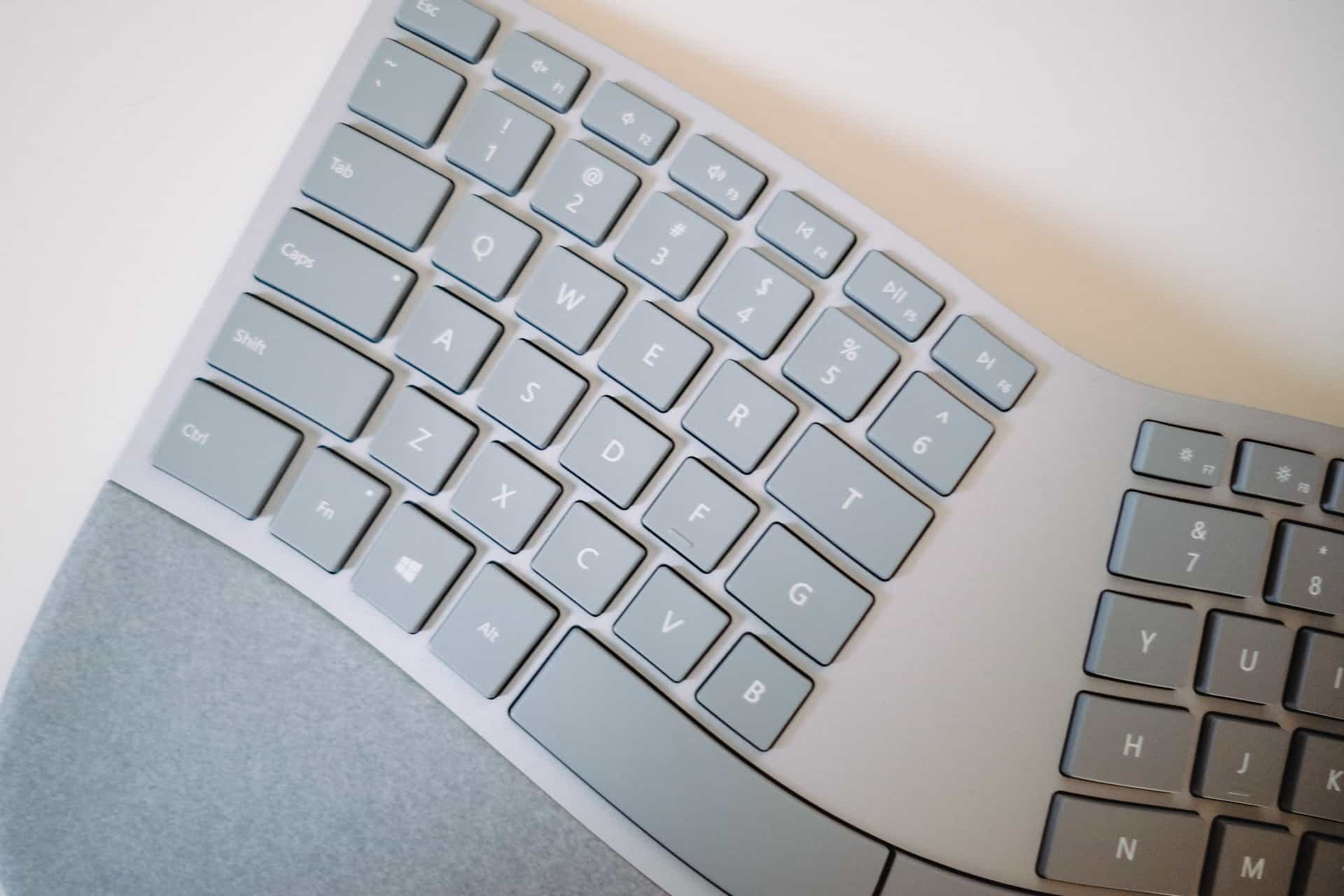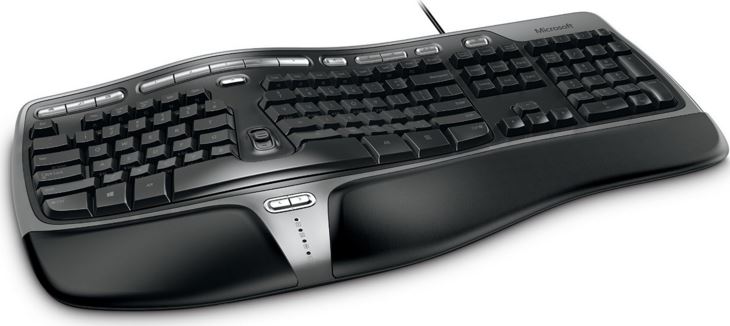Map Microsoft Ergonomic Keyboard To Mac
Feb 06, 2019 When you use a Windows (PC) keyboard on a Macintosh computer, the keyboard shortcuts that you use map to different keys. In particular, the primary key that is used in keyboard shortcuts in combination with other keys is frequently different. The following are the primary key substitutions on the Windows keyboard, and their Macintosh equivalents. According to some studies, ergonomic keyboard designs, such as the Microsoft Natural line, have been associated with significant reduction of carpal tunnel syndrome symptoms. Rest your wrists against the plush palm rest in a relaxed, natural angle with this keyboard’s curved key bed, ergonomic.
By David Röthlisberger. Comments welcome at david@rothlis.net.
Last updated 4 Oct 2011. This article is Creative Commons licensed.
The Microsoft Natural Ergonomic Keyboard 4000 doesn’t feel very “Mac-like”, at least not out-of-the-box. Read on for helpful settings to improve the experience, and a brief review of the keyboard at the end.
If your kernel panics, upgrade the drivers
OS X kernel panic
On Snow Leopard (OS X 10.6), the IntelliType Pro 8.0 drivers caused me kernel panics at least once a day.
The recent 8.2 driversdon’t cause kernel panics on Lion (OS X 10.7). I haven’t tested them on Snow Leopard, but I assume it is the new drivers, rather than the new Operating System, that contain the fix. Readers have reported that the older 7.1 drivers work well with Snow Leopard (note that the 7.1 drivers say they are for the older Natural Keyboard Pro, but they also work for this newer keyboard). Let me know if you have tested other combinations of driver/OS versions.
Or don't use the Microsoft drivers at all
Ironically, the Microsoft drivers stop OS X from recognising the keyboard for what it is! Without the drivers, OS X reports “Natural® Ergonomic Keyboard 4000”; with the IntelliType drivers, it’s a mere “Keyboard”.
With IntelliType drivers
As the last straw, if you remap your Caps Lock key to Control via Apple’s Keyboard preference pane, with the Microsoft drivers installed the remapping will be lost every time you restart.
The following table should help you decide whether you want the Microsoft drivers. More detailed explanations follow.
| With Microsoft IntelliType drivers | Without Microsoft drivers |
|---|---|
| Kernel panics with 8.0 drivers on Snow Leopard; fine with 8.2 drivers on Lion. | No kernel panics. |
| Modifier key mappings.. | |
| lost every time you restart. | aren't lost. |
| You can swap the Alt and Windows keys.. | |
| with the IntelliType software. | with KeyRemap4MacBook. |
| You can use the Application key as a Command or Option key.. | |
| with the IntelliType software. | with KeyRemap4MacBook. |
| Media keys all work correctly. | Only mute, volume and play/pause keys work. Web, search, mail, calculator, favourites 1, 2, 3, 4 & 5, back and forward, and the zoom slider don’t work. |
How to uninstall the Microsoft drivers
The IntelliType UnInstaller is in the Utilities sub-folder of your Applications folder. (If you installed the IntelliPoint mouse drivers, which were bundled in the same installer, the corresponding UnInstaller is in the same location.)

If you don’t want to run the uninstallers, you can remove the following manually:
/System/Library/Extensions/MicrosoftKeyboard.kext
Learn how to install Office 365, Office 2016, or Office 2013 on your PC or Mac. Skip to main content. Download and install or reinstall Office 365 or Office 2019 on a PC or Mac. Open Finder, go to Downloads, and double-click Microsoft Office installer.pkg file. Note: The steps to install the 2016 or 2013 versions of Office Professional Plus, Office Standard, or a stand-alone app such as Word or Project might be different if you got Office through one of the following: Microsoft HUP: If you bought Office for personal use through your company, see. Collaborate for free with online versions of Microsoft Word, PowerPoint, Excel, and OneNote. Save documents, spreadsheets, and presentations online, in OneDrive. Get started with Office 365 for free. Students and educators at eligible institutions can sign up for Office 365 Education for free, including Word, Excel, PowerPoint, OneNote, and now Microsoft Teams, plus additional classroom tools. Use your valid school email address to get started today. 2013 microsoft office download.
/System/Library/Extensions/MicrosoftMouse.kext (if you also installed the IntelliPoint drivers)
/Library/Keyboard Layouts/Microsoft Keyboards.bundle
and the Microsoft Keyboard preference pane (open System Preferences, and right-click the Microsoft Keyboard icon, or drag it off the window in a puff of smoke).
Swap the Alt and Windows keys
Microsoft Natural modifier keys
The Windows key is automatically treated as Command (⌘), but on Apple keyboards the Command key is next to the spacebar, with Option (Alt) the next key out. On the Microsoft keyboard this is reversed, and the IntelliType drivers helpfully have a setting to reverse these two keys; luckily OS X also has this functionality built in.
Outlook exchange. You will be amazed that this option will both help you and tell you what to do with the help query.
It’s under the Modifier Keys button of the Keyboard System Preferences pane.
Simply map Option to Command, and vice-versa. These settings are per-keyboard, so you won’t mess up your MacBook’s built-in keyboard.
While you’re here you can also map your Caps Lock to Control, if you so wish.
Use the Application key as a Command or Option key
Application key
To the right of the spacebar, this keyboard has an “Application” (or Context Menu) key instead of a Windows key. The IntelliType drivers include a setting to treat this key as Command, but OS X has no such setting.
Apple’s customizable XML keylayouts only allow mapping key codes to output characters, but not changing or adding modifier keys. Graphical interfaces built on top of this mechanism, such as Ukelele, have the same limitations. You’ll need the open-source KeyRemap4MacBook.
In spite of its name, KeyRemap4MacBook works on any Mac (with OS X 10.4 or later). It doesn’t allow arbitrary key mappings, but, in the best open-source tradition, it does have zillions of settings. The one you want is under “For PC Users” » “Change PC Application Key” » “Application Key to Option_L” (i.e. left-option, not option+“L”). What you set here doesn’t seem to be affected by OS X’s own modifier keys remapping.
Media keys
The keyboard’s mute, volume and play/pause keys all work out of the box, no IntelliType required. There are no keys for previous/next song.
(Without the Microsoft drivers) None of the remaining media keys work (web/home, search, mail, calculator, “favorites” 1 through 5, back and forward, and the zoom slider).

Function keys
The Function keys (F1, etc) behave as such (as opposed to brightness, volume, etc), regardless of what you set in the Keyboard preference pane. If you press “F Lock” the F keys simply do nothing. Luckily the F Lock remembers its setting across reboots.
There is no Fn modifier key as on the Mac keyboards.
KeyRemap4MacBook allows you to map the F keys to the usual brightness, volume, etc. but then you’d lose the normal F keys.
Insert, Delete, Home, End, Page Up, Page Down
On the Mac OS there is no such thing as an Insert/Overwrite toggle (even on Apple’s extended keyboard there is no Insert key). So unsurprisingly, the Insert key does nothing.
Delete works. Page-Up and -Down work. Home and End scroll to the top and bottom of the window instead of moving the cursor to the beginning or end of the line (but this is consistent with the behaviour of Apple keyboards) except in Microsoft Office, where Home and End behave as on the PC.
Numeric keypad
Num Lock doesn’t work, but fortunately it is stuck in the numeric mode.
Final thoughts
I initially liked this keyboard: The split and tenting angles provide a comfortable resting position, it has Command, Option and Control keys for both hands, and the price is quite reasonable.
But after several months, I have stopped using this keyboard. It’s just too large! Keys like Return, Backspace, and Escape are quite far away from the home position. I don’t really need a numeric keypad (it forces the mouse that much further away). The keys are loud (especially the clunky spacebar) and the key travel distance (and the force required to press them) is more than I’d like.
Map Microsoft Ergonomic Keyboard To Mac Pro
These are of course quite personal opinions, and this keyboard could be just perfect for someone else. As a computer programmer I do a lot of typing, so I try to optimise for ergonomics.
Kinesis Freestyle for Mac:
No right-hand Control key
Ergonomic Laptop Keyboard
I really like having all three modifiers (Command, Option and Control) available to my left and right hands, though this may not be so important for non-programmers. I don’t think I’d buy an ergonomic keyboard without this feature. The Kinesis keyboards, and Apple’s own keyboards (except the Apple external keyboard with numeric keypad), lack the right-hand Control.